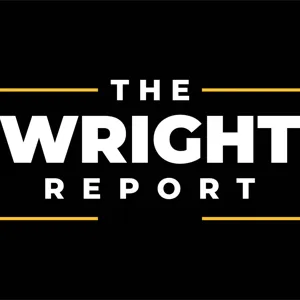Podcast Summary
Challenges for the Wind Power Industry: The wind power industry is facing higher borrowing costs and increased component costs, leading to concerns about the sector's future prospects despite incentives from the Inflation Reduction Act. Permitting issues and math not penciling out are also challenges.
The wind power industry is facing challenges from multiple directions, leading to a difficult year for the sector. Higher borrowing costs due to surging interest rates and increased component costs are two major headwinds. The industry, especially in the US, is still relatively new and growing, but there are questions about whether it's a low-interest rate phenomenon or if there are fundamental challenges. The Inflation Reduction Act has brought incentives and investment into the sector, but there are also concerns about permitting issues and the math not penciling out. To better understand the current state of the wind power industry and its future prospects, we're speaking with Chelsea Jean Michel, an offshore wind analyst at Bloomberg NEF.
US offshore wind industry's challenges with offtake contracts: The US offshore wind industry faces challenges securing financing due to uncertain offtake contracts and potential macroeconomic changes during the lengthy development process.
The US offshore wind industry is growing but faces unique challenges due to the lengthy development process and uncertainty around offtake contracts. These contracts, which guarantee the sale of power to utilities for around 20 to 25 years, are crucial for securing financing for these projects. However, in the US, these contracts can be signed before other necessary agreements like grid connections and permits are in place, leading to increased risk. As a result, when these projects go to reach financial close, they may find themselves in a different macroeconomic environment than when they initially placed their bids, which can impact their ability to secure financing in a higher interest rate environment. When creating a wind farm, costs include acquiring seabed leases, development costs, and bidding into procurement or solicitation processes. The lengthy development process in the US can take up to 14 years, making it important for developers to carefully consider these factors.
Understanding the Financial Implications of Offshore Wind Energy Projects: Offshore wind energy projects involve substantial costs beyond initial investment, including equipment expenses, financing costs, and operational expenses. Economic conditions, such as inflation and interest rates, significantly impact these costs.
The development and financing of an offshore wind energy project involves significant costs beyond just the initial investment. These costs include equipment expenses, such as turbines, foundations, and transmission systems, as well as financing costs and operational expenses. Additionally, the project timeline can span over a decade, making financing costs a substantial consideration. The economic landscape for developers has shifted significantly in recent years due to inflation, interest rate hikes, and new tax incentives. For instance, the LCOE (Levelized Cost of Electricity) for offshore wind projects in the US increased from around $77.30 per megawatt hour in 2021 to approximately $114.20 per megawatt hour in 2023. This highlights the importance of understanding the financial implications and the ever-changing economic conditions when undertaking such long-term projects.
Wind industry facing cost pressures, renegotiating contracts unsuccessful: Wind industry faces rising borrowing costs and fixed revenue, attempts to renegotiate contracts met resistance, focusing on operational efficiency and technological innovation to reduce costs
The wind industry is facing significant cost pressures due to rising borrowing costs and fixed revenue from offtake agreements. Developers have attempted to renegotiate contracts to offset these costs, but have met resistance from regulators. Another approach is to reduce costs through standardization and efficiency measures. However, renegotiation can be risky as it calls into question the competitive nature of the award process. Instead, developers may need to focus on improving operational efficiency and reducing costs through technological innovation and economies of scale. Renegotiation attempts have not been successful so far, with developers facing fines for attempting to exit agreements in Massachusetts and New Jersey. In New York, the outcome is still uncertain. Standardization and efficiency measures, such as those seen in the oil industry, could help bring down costs. However, these measures may not be enough to fully offset the rising costs. Developers will need to be creative and adaptable in order to succeed in this challenging environment.
Factors affecting offshore wind energy costs and designs: Effective contingency planning and a realistic view of future conditions are crucial for managing unforeseen circumstances and ensuring the viability of offshore wind projects.
The cost of selling electricity and the optimization of project designs are crucial factors in the development of offshore wind energy. However, unforeseen circumstances, such as supply chain complications and regulatory issues, can significantly impact project costs and timelines. The Jones Act, which mandates that ships used for transportation between US points be built, flagged, and crewed by Americans, adds complexity and cost to offshore wind projects. While larger turbines and optimized designs can lead to cost savings, later-stage projects may face challenges in reconfiguring and securing new suppliers or technology. Effective contingency planning and a realistic view of future conditions are essential for navigating these challenges and ensuring the viability of offshore wind projects.
Jones Act poses challenge to US offshore wind industry: The Jones Act, permitting processes, and lack of inflation adjustment mechanisms in US offtake contracts are major hurdles for the US offshore wind industry. However, tax incentives and funding for port infrastructure in the Inflation Reduction Act offer some relief.
The Jones Act, a US law requiring vessels used in coastal transportation to be built, owned, and crewed by Americans, poses a significant challenge to the US offshore wind industry. Currently, there's only one Jones Act-compliant wind turbine installation vessel under construction, which will not be ready for several years. This delay has forced companies like Orsted to consider using European vessels and feeder barges to install their wind turbines. The lack of Jones Act-compliant vessels is just one of the challenges the US offshore wind industry faces. Permitting processes and the lack of inflation adjustment mechanisms in US offtake contracts also create hurdles. However, the Inflation Reduction Act (IRA) includes provisions to help the industry, such as tax incentives and funding for port infrastructure. At the state level, some states have begun to introduce inflation adjustment mechanisms in their offtake contracts to protect wind energy projects from price fluctuations. Despite these challenges, the existence of the US government as a large underwriter through the IRA provides some certainty to the industry during uncertain times.
States drive offshore wind growth: States' initiatives, like pricing indexing and long-term agreements, protect developers from risks and encourage investment, while federal tax credits decrease offshore wind costs, making it an attractive addition to the grid despite high costs.
While the federal government's goals and incentives for offshore wind energy are important, the primary driver for its growth comes from the state level. State-level initiatives, such as indexing prices to various metrics and providing long-term certainty through off-take agreements, help protect developers from risks and encourage investment. At the federal level, the Inflation Reduction Act's tax credits will decrease the cost of offshore wind, making it more attractive to investors. However, the high capacity factors and economic development opportunities associated with offshore wind make it a valuable addition to the grid, despite its high cost. Overall, the states' role in fostering offshore wind growth is crucial, and the federal government's initiatives serve to complement their efforts.
Financial Challenges in Large-Scale Wind Energy Projects: The current economic climate poses significant financial challenges to large-scale wind energy projects due to inflation and increased borrowing costs, particularly for offshore wind projects, but experts view it as a temporary setback in the context of long-term cost declines in renewable energy.
The current economic climate, marked by inflation and increased borrowing costs, poses significant challenges to the financial viability of large-scale wind energy projects. This issue is not unique to wind power, as other industries and sectors have also been impacted. However, the size and scope of wind projects, particularly offshore wind, make them more susceptible to the financial pressures due to their massive investment requirements and the long-term nature of these projects. The implications of these challenges extend beyond individual companies, as wind energy plays a crucial role in the US' clean energy goals, particularly in regions with limited solar potential. Despite these challenges, experts view this as a temporary setback in the context of long-term cost declines in renewable energy.
Offshore Wind's Structural Challenges and Opportunities: The offshore wind industry faces challenges from growing turbine sizes, but its ability to stabilize grids and reduce price spikes makes it essential for the energy transition. Inflation-indexed offtake contracts could improve project viability.
The offshore wind industry is facing structural challenges as turbines continue to grow in size, requiring advancements in vessels, ports, and factories to support their installation and manufacturing. However, the benefits of offshore wind, including its ability to help stabilize electricity grids and reduce price spikes, make it a necessary part of the energy transition. Another key point is that inflation-indexed offtake contracts could potentially make offshore wind projects more financially viable, although this may be politically challenging. Overall, the offshore wind industry presents complex challenges but also significant opportunities for growth and innovation.
Exploring the complexities of wind energy: Wind energy offers substantial rewards but comes with engineering, financing, and market structure challenges. Optimizing turbine size, bidding processes, and adapting to changing market conditions are crucial for energy providers.
Despite the challenges in the wind energy sector, including engineering, financing, and market structure, the potential rewards are significant. Wind power can generate a substantial amount of energy from a relatively small area, making it an attractive option for energy providers. However, there are numerous considerations when it comes to optimizing wind turbines, such as blade size, turbine size, and bidding processes. Additionally, changing market conditions and environmental factors can impact revenue for energy providers, leading to the need for renegotiating offtake agreements. The complexities of the wind energy sector and the potential for significant rewards make it an intriguing area for further exploration. The ongoing conversation around wind energy will likely include discussions on the optimal size of turbines and blades, bidding processes, and the potential impact of regulations such as the Jones Act. For energy providers, navigating these complexities and optimizing their wind energy operations will be key to financial viability.


![How the US climate bill will finance the energy transition [partner content]](https://www.podcastworld.io/podcast-images/catalyst-with-shayle-kann-0g3h5pg5.webp)


